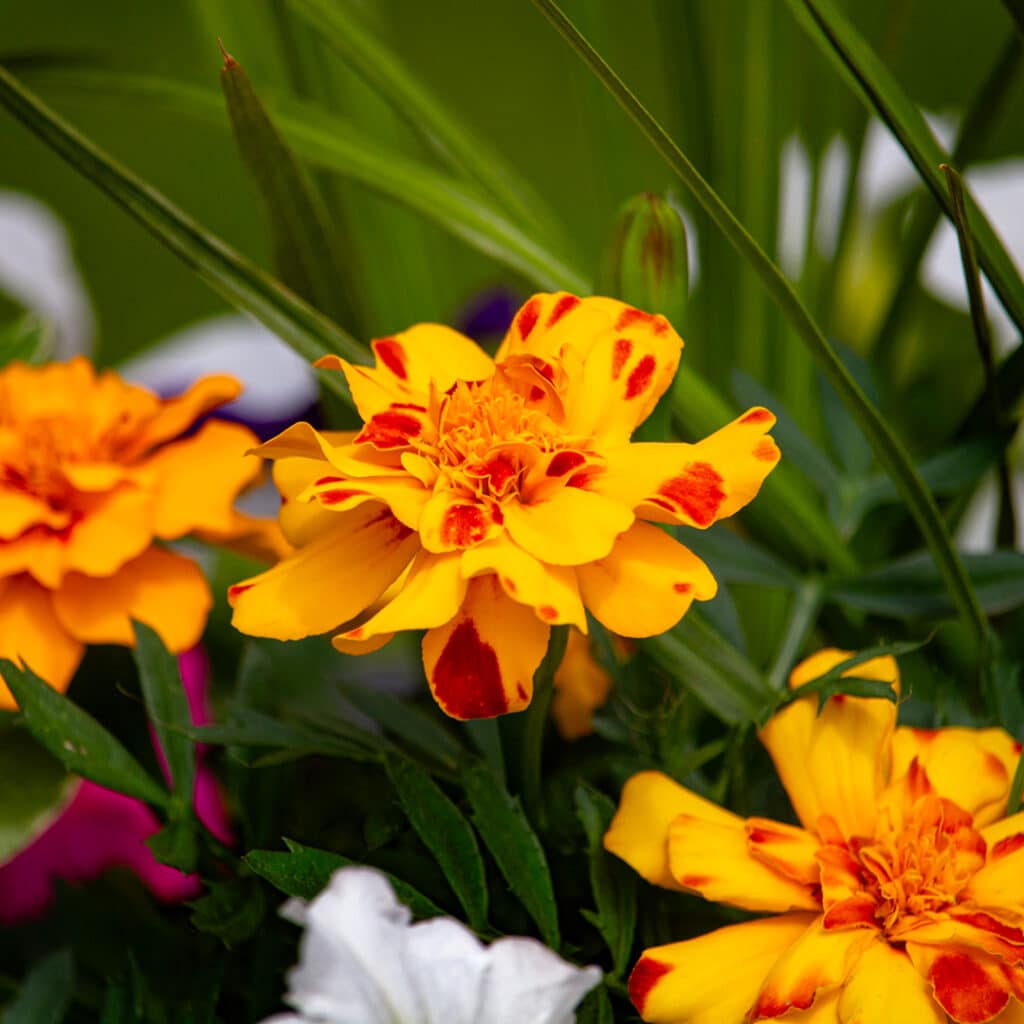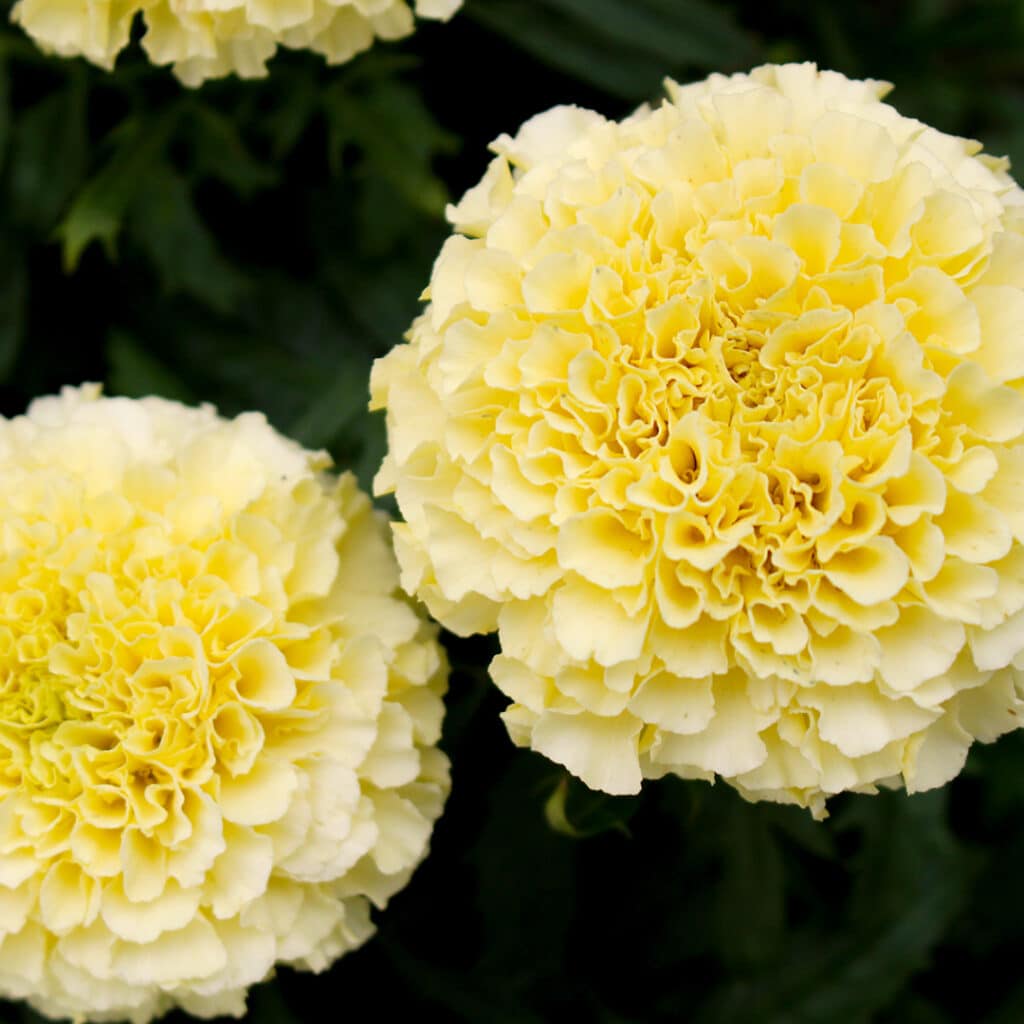All About Marigolds!
Ah, marigolds—they are the unsung heroes of the summer flower garden. Resilient, bold, and long-blooming, they create a tapestry of glowing yellow, gold, orange, and red that shines in a sunny setting from late spring to frost.
Types
There are three main types of marigolds. They all have edible petals, are perfect for creating natural dyes, attract bees and butterflies, and share a distinct aroma that helps ward off some common garden pests. Yet, each type, with its own individual size and shape, holds a unique position in the garden. French Marigolds (Tagetes patula) French marigolds are compact, bushy plants with delicate, lacy foliage and brightly colored blooms in orange, yellow, and red shades. They are perfect for border edging, adorning container gardens, or nestled next to your vegetable plants. Their small size will not overshadow other plants in the edible garden. African Marigolds (Tagetes erecta) Taller than French marigolds, African marigolds exhibit larger, more showy flowers in creamy white, yellow, gold, and orange shades. They are the perfect addition to the middle of a bright-colored flower bed or border. Their statuesque form and long, sturdy stems make them an exquisite choice for cut flower arrangements. Signet Marigolds (Tagetes tenuifolia) With their delicate, fern-like foliage, Signet Marigolds are small in stature and produce tiny blooms in warm tones of red, orange, and yellow. With a citrusy flavor, these edible flowers look lovely as a garnish and taste delicious in salads. Signets work well for border edging, sunny window boxes, and containers.Marigold Cultivation & Care
Marigolds are simple plants, easy to grow, with few demands. They aren’t fussy, but they do have some preferences.- Site: They flower best with a minimum of 6 hours of sunlight.
- Soil: Regarding soil, they are partial to a well-draining one, rich in organic matter, with a pH level between 6.0 and 7.0. If you’ve got sandy loam soil, you’ve hit the jackpot in the marigold world.
- Pinching: Marigolds benefit from pinching when young, creating a fuller plant with plenty of side branching and blooms.
- Feeding: Add granular organic or slow-release fertilizer to the soil at planting time, then feed plants every other week with a liquid fertilizer listed for flowering annuals.
- Mulching: Adding a layer of mulch to the soil around your plants will help retain soil moisture and prevent weeds; plus, it looks great!
- Watering: Deep, infrequent watering that allows the soil to dry out in between is what marigolds desire.
- Deadheading: Frequently remove spent flowers to keep fresh blooms coming.















